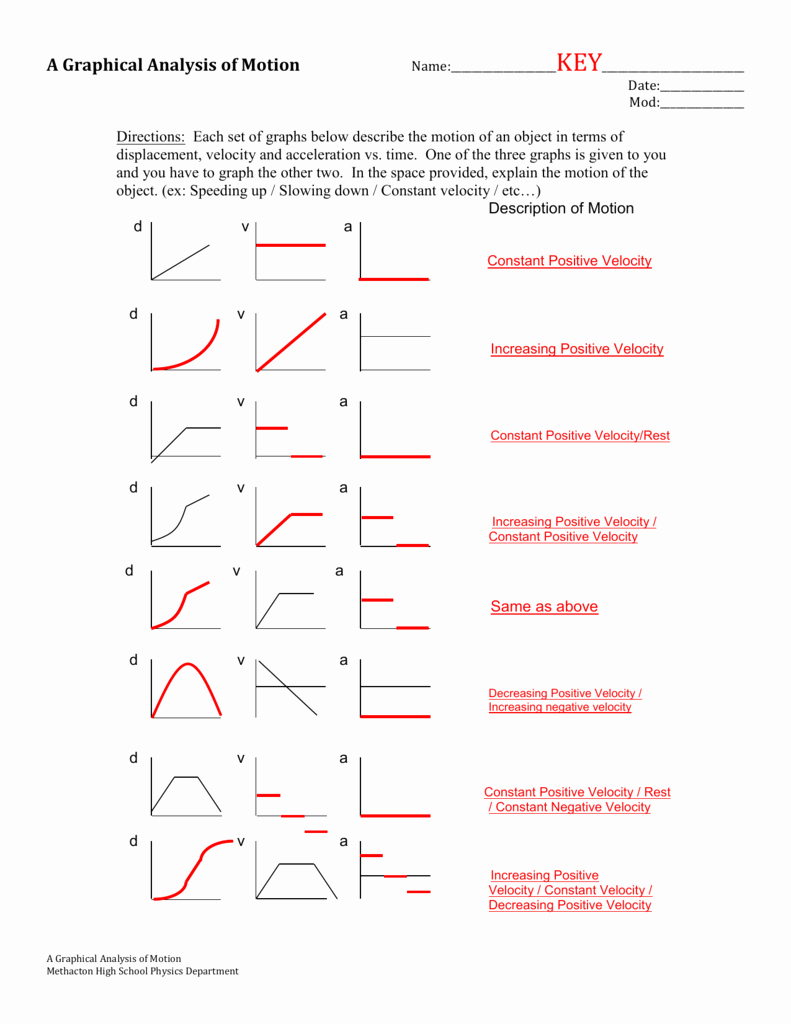

- #Graphical analysis of motion physics manual#
- #Graphical analysis of motion physics plus#
- #Graphical analysis of motion physics download#
A Comprehensive Survey of Scene Graphs: Generation and …. To find the average velocity, recall that. The instantaneous velocity can just be read off of the graph. The acceleration is given by finding the slope of the velocity graph. The displacement is given by finding the area under the line in the velocity vs. The line on this graph is curving upwards. Graphs that show acceleration look different from those that show constant speed. A considerable amount of information about the motion can be obtained by examining the slope of the various motion graphs. For example, from 1970 to 1980, the GDP has increase in near to 2 . With the graph it can be seen that there's a positive trend component. Analysis of Gross Domestic Prodcut (GDP) in the United. Section 2-8: Graphical Analysis of Linear Motion. time graph? Acceleration is the slope of a velocity vs. for a robust statistical analysis of the collective behavior parameters. Fish provide a typical example of such self-organization. Illuminance-tuned collective motion in fish. kinematics motion graphs, Chapter 2 graphing motion example problems.
#Graphical analysis of motion physics download#
Download Exercises - Worksheet on Motion Graph Analysis Answer Key Wayne State. So it will tell us about the journey made by a body and its speed. Distance-time graph is the plot of distance travelled by a body against time. Motion Graphs - Distance Time Graph And Velocity. Example of graphical analysis of linkages, four bar linkage.
#Graphical analysis of motion physics manual#
Manual Calculation: For the analysis of a four bar mechanism, we consider a problem of. Read this text for an introduction on graphical position, velocity, and acceleration with regards to one another. Graphical Analysis of One-Dimensional Motion. Kinematics Graphical Analysis of Motion Distance-time graph Distance-time graph (a) Deduction from the graph (i) Horizontal line - Body at .

#Graphical analysis of motion physics plus#
In one-dimensional or straight-line motion, the direction of a vector can be given simply by a plus or minus sign. For example, displacement, velocity, acceleration, and force are all vectors. Recall that a vector is a quantity that has magnitude and direction. The Graphical Method of Vector Addition and Subtraction. 5.1 Vector Addition and Subtraction: Graphical Methods. The principle is that the slope of the line on a position-time graph reveals useful information about the velocity of the object. In dealing with motion graphs, a basic model for understanding is the slope – the graded change in the magnitude of some physical quantity or dimension: = That . (c) Acceleration gradually declines to zero when velocity becomes constant.Graphical analysis of motion examplesGraphical Analysis Of Motion Examples. The slope of this graph is acceleration it is plotted in the final graph. (b) The velocity gradually approaches its top value.

(a) The slope of this graph is velocity it is plotted in the next graph. This motion begins where the motion in Figure 3 ends. Graphs of motion of a jet-powered car as it reaches its top velocity. Similarly, velocity increases until 55 s and then becomes constant, since acceleration decreases to zero at 55 s and remains zero afterward. If we call the horizontal axis the\boldsymbol,after which time the slope is constant. When two physical quantities are plotted against one another in such a graph, the horizontal axis is usually considered to be an independent variable and the vertical axis a dependent variable. Slopes and General Relationshipsįirst note that graphs in this text have perpendicular axes, one horizontal and the other vertical. This section uses graphs of displacement, velocity, and acceleration versus time to illustrate one-dimensional kinematics. Graphs not only contain numerical information they also reveal relationships between physical quantities. time.Ī graph, like a picture, is worth a thousand words. Determine average or instantaneous acceleration from a graph of velocity vs.Determine average velocity or instantaneous velocity from a graph of position vs.Describe a straight-line graph in terms of its slope and y-intercept.


 0 kommentar(er)
0 kommentar(er)
